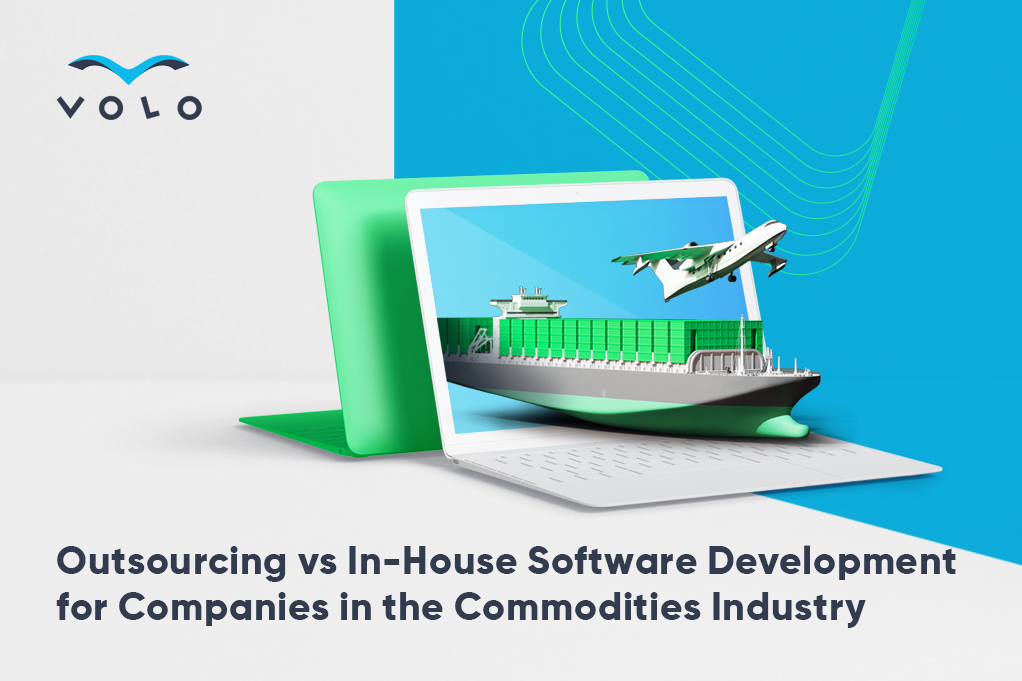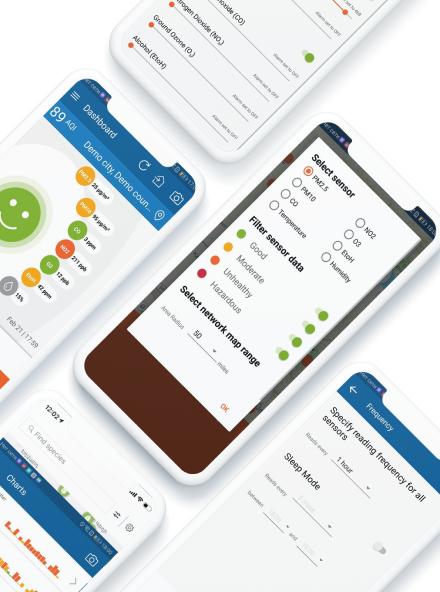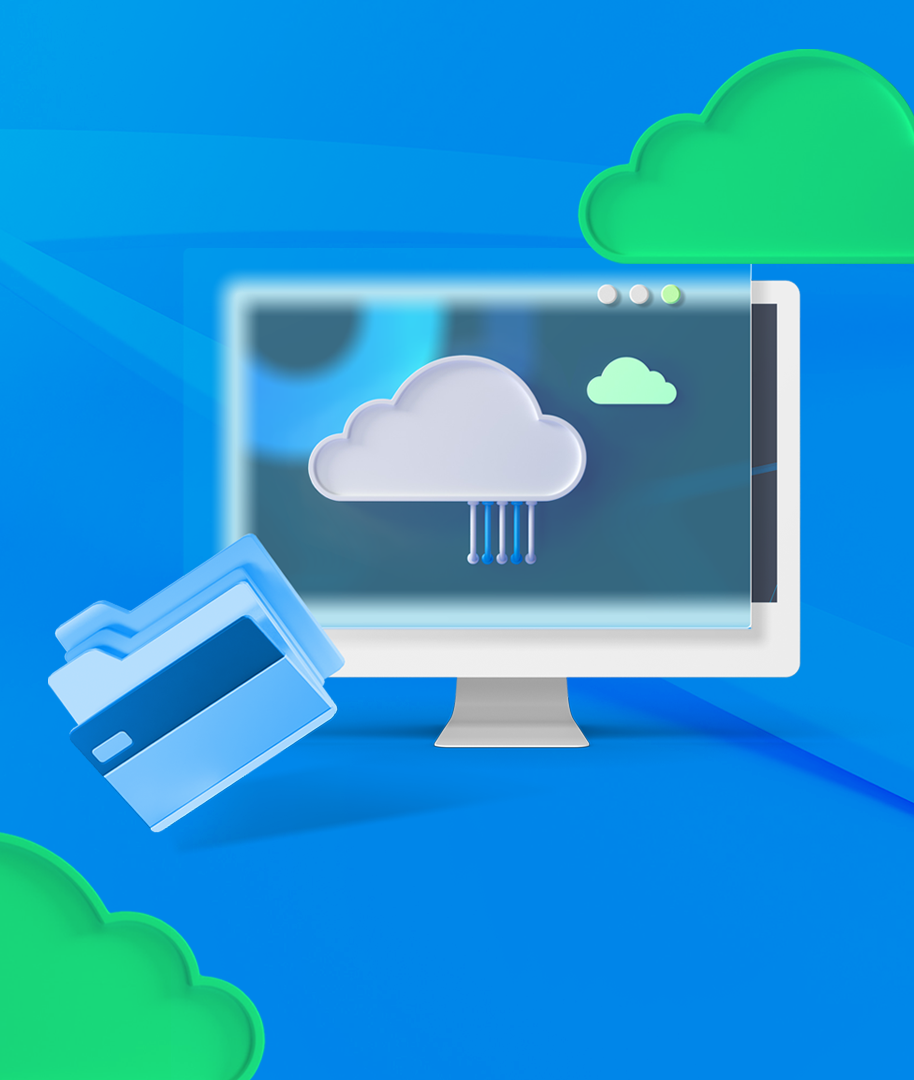
Outsourcing vs In-House Software Development for Companies in the Commodities Industry
3 Aug 2023

What comes to your mind when you think of “agile”? Whatever it is that strikes you first, it’s most likely related to the tech industry. The agile approach has long become an inseparable part of software development and software project management processes, ensuring faster execution of tasks, more precise responsibilities, fluid teams, and increased organizational simplicity.
However, the benefits of agile methodology do not tackle the problems of software development alone. They can go so far as to break the ice in the commodities industry as well. Agile approaches combined with the right software tools can highly improve the slow processes of companies engaged in the various sectors of heavy industry.
As a matter of fact, many commodities businesses have already borrowed the ideas behind agile from software development companies and are implementing them in their day-to-day activities. One way to embrace the benefits of agile, especially for those in the commodities industry, is through investing in software development, in other words, going digital.
Doing so, you will kill two birds with one stone. First, you will streamline your business processes through the employment of software tools, thus lifting a huge burden off the shoulders of your team and allowing them to focus on more important tasks. Secondly, you will get a grasp of the agile methodology and look into the possibility of implementing it in your organization, which in its turn will help speed up task ideation and execution.
How to start the software development process though? How to know what can be digitized in your organization, or rather, what needs to be digitized? Considering that the commodities industry, especially, the mining sector, is probably the least tech-friendly place, with most of its operations carried out, kind of, under the hood; it can be quite challenging to figure out ways of implementing new and innovative software tools in this business.
Besides, business owners in this industry are quite conservative and cling to the old, sometimes even obsolete ways of doing things. They can even be skeptical of the potential of innovative technologies to transform their business processes. These factors make the shift to digital way more difficult than it should be.
It is also true that many major businesses in the commodities industry have already adopted digital transformation and are successfully reaping the benefits that the partnership with an outsourcing company brings to the table.
Why Should Your Commodities Company Invest in Software Development?
The commodities sector is multilayered and increasingly broad, covering a large number of different sectors and products - from agriculture, forest products, precious stones to metals, mining, energy products, and chemicals.
First, let’s have a look at some statistics about the commodities industry, with a focus on the mining sector, to see the bigger picture:
- It is a given that the global mining industry is a huge supplier of raw materials for various sectors. The revenue of the top 40 global mining companies amounted to around $925 billion as of 2021.
- Iron ore, coal, potash, and copper - these are the most exploited commodities around the world.
- As of 2021, the total operating costs of the top mining companies worldwide hit $633 billion - a huge increase from $482 billion - the amount spent in 2020. The expenses are forecast to keep growing in the coming years.
- In 2022, iron ore was one of the most produced mineral commodities globally. Its production amounted to nearly 2.6 billion metric tons.
- Mining exploration budgets of different countries keep increasing on a yearly basis. In 2021, Canada’s mining exploration budget increased by approximately $801 million, as compared to 2020. Australia came second with a budget increase of nearly $530 million.
- The top producers in mining are China, Australia, the USA, Russia, Canada, and South Africa.
- Mining companies worldwide are some of the largest employers. Over 3.7 million people work in the mining sector, of whom 1.5 million are from developed countries, and 2.2 million are from developing countries.
It goes without saying that the commodities industry does not start and end with the mining sector. However, the above statistics show the enormity of this field and the huge impact that it can have on the world economy in general. In a competitive market as such, with only several big player companies, it’s important to invest in modern solutions in order to stand out among the many new names.
What are the Benefits of Digitalization for the Commodities Industry?
Digital transformation and app modernization can become the modern and investment-worthy solution you have been looking for. They are already reshaping commodity trading at a faster pace than ever and many companies are getting the benefits. However, it should be noted that commodity traders are quite the laggards when it comes to digital transformation. This is understandable though - people in this industry are in a kind of closed circle, have been doing things in the same ways for decades, and are more or less conservative. It’s not easy to switch from the standard ways that have actually worked for you for so long to the new solutions that the tech sector offers.
Nonetheless, as they say, if you don’t risk anything, you risk everything. This is especially true for our times. Not investing in technological innovations, your business will sooner or later fall behind the tough market competition.
Now, let’s have a closer look at all the benefits that digitalization brings for the commodities industry:
1. Increased Value and Improved Business Processes
Software technologies help make the value chain better connected, thus improving communication, collaboration, and decision making processes.
2. Access to Real-Time Data
As they say, “data is the new oil” and who could benefit more from 21st century oil, if not the commodity traders? Companies in the commodities sector now have access to real-time market feeds, weather reports, product movements, manufacturing and shipping schedules, inventory levels, and all types of relevant news.
You can embed IoT sensors in everything and get real-time information on your agriculture products, the state of metals from mine to manufacturer, and oil from discovery to consumption. All this data can help you make smart trading decisions provided you have the right CTRM (commodity trading risk management) software in place. The latter will help you analyze the collected data.
3. AI and Big Data Analysis
Another way to get deeper insights into the abundance of data you have is through AI tools. They are able to quickly analyze the data gathered in commodity management on a daily basis. Thus, you can receive valuable information within a few minutes - something that would take days or even weeks, otherwise.
For example, AI algorithms can streamline the assessment of ore fragmentation, underground site inspections and open pit mine investigations using 3D maps, aerial photographs, and satellite imagery. By combining core drill data, sample analysis results, as well as survey reports, AI tools can also come up with techniques and solutions that will help increase ore deposits.
Certain AI programs that analyze surface and subsurface areas help you achieve improved targeting across grade zones, minimize the number of exploratory drilling holes, and resume explorations in defunct mines. As a result, miners are able to save time, boost workplace safety, and be more productive.
Another good example is the use of self-driving haul trucks that can operate in physically demanding and somewhat dangerous environments. Moreover, using machine learning algorithms can prevent asset downtime by predicting overload events, component failure, and the longevity of industrial equipment and tools.
4. The Invaluable Input of Mobile
Mobile phones can be helpful in commodity trading too. They help you be on top of things constantly and take immediate action when need be. You can log into your CTRM from your phone anywhere, anytime and check on the work progress, the market situation, etc.
5. Enhanced Flexibility Thanks to Cloud Computing
An important part of digital transformation is the switch to the cloud. Such a change can have a disruptive impact on a commodities company since it will allow you to access your data and systems anytime (ensuring mobile access too). Besides, it’s one of the simplest tech implementations that you can have, with options to scale and expand the features of the cloud system further in the future.
Let’s say, you need a basic CTRM solution for starters but also plan on adding more capacity and features later on. Cloud systems allow you to pay for the basic plan initially and later, as your company grows, you can purchase reporting and risk management apps without harming the existing processes.
6. Bureaucracy Reduction and Optimized Contract Management
By employing automation tools into your company’s day-to-day processes, you will see a significant reduction in bureaucracy and an improved document flow. The commodities trading industry will especially benefit from this since it deals with quite a lot of paperwork. The trading process itself starts with the signing of a contract. This process can sometimes involve many different employees who receive the contract-related data and conditions through various messengers or emails that can get lost among a ton of other information that circulates via email.
The draft of the contract is checked by lawyers, financiers, risk managers, logisticians, and other responsible roles in the company. Afterwards, the contract is sent to the counterparty, who, in his turn, makes changes on it and sends it back. The whole process is then repeated. Basically, it can take over a month to sign a commodity trading contract. This can lead to one party refusing to deliver the goods on time and result in financial loss.
On the other hand, if you automate processes, all the information will be shared via a mobile app within seconds and all the changes made can be viewed by everyone inside the company and the counterparty. As a result, the contract can be drafted, finalized, and signed within a day, minimizing all the manual work and email exchange.
7. Better Transparency and Security
When digitized, business processes and daily operations become simpler and easier to access which ensures better transparency for everyone in the company. Other than that, since a building block of a successful commodity business is the number of successful collaborations with its partners, digital tools can help ensure you are working with the right people. Digital platforms can help you check your future partners’ solvency to ensure they are reliable, by checking, say, their unified credit score.
8. More Opportunities for Small and Mid-Size Commodity Traders
With the increase of the role of technology in commodity trading, the industry is no longer a closed circle available to the big-player companies only. Small and mid-size firms can now have their say in the commodities market too. The most important thing is to know how to wisely use the data that your software tools gather for you.
It’s good to recall the words of Leigh Johnson, the global head of commodities at Refinitv: “It’s not just about the speed that you can improve by speeding up paper-based mapping processes, or even the reduction of human error, it’s also about ensuring that companies have access to up-to-date information. If that information is digital in nature and maintained using automated means then it’s not only going to be available to improve operational factors, but also it can inform and support trading decisions as well.”
9. Minimized Environmental Impact
Manufacturing factories can implement software solutions to reduce their environmental impact through such tools as raw materials inventory management, priority-based production planning, and auto-booking engines.
As you can see, digital transformation is now just a buzzword. It does come with multiple benefits that can help your commodities business in ways you could not imagine.
Software Outsourcing: The Shortcut to Digital Integration into Your Commodities Business
Now that we have talked about the importance and benefits of integrating digital tools into your commodity trading business, it’s time to discuss how you should do that. Many commodities firms lack tech teams or have only a few tech specialists who already have enough on their plate. This means that you will need the help of more talent to guide you on your digitization and digitalization journey.
You have two options here:
- In-House Software Development: This means you hire your in-house tech team to handle your software needs.
- Outsourcing Software Development: You partner with an experienced software development company, either onshore, nearshore, or offshore, and let them take care of your software needs.
The choice between the two might seem tough at first sight, however, when you look at the benefits and drawbacks of each, the picture becomes clearer. There is no good or bad, you just need to choose the one that meets your current business needs and fits your software project specifications the best.

What are the Advantages of Software Development Outsourcing?
As someone in the commodities industry, we assume that you must be dealing with anything from energy, metals, mining, construction materials to agricultural products and livestock. None of this seems to have anything to do with software. This is why we understand that you might be completely unfamiliar with the tech world and might find yourself overwhelmed with the information on the web as to where you should start the process of digitizing your business.
Worry not, we will help you in making the first, most important step - the choice between outsourcing and in-house development. Let’s have a look at the main benefits that software development outsourcing comes with:
- Cost Effectiveness: This is one of the main factors that drives businesses worldwide to outsource their software development. Outsourcing your software needs to an offshore organization will allow you to hire top talent at affordable pricing, releasing you from such additional costs as onboarding, employee benefits, insurance, training, leaves, etc. You only pay an hourly rate for each tech specialist working on the development of your project. After the project is completed, you can “let them go” with a peace of mind, which would not be the case with an in-house team.
- Short-Term Commitments: Remote teams are easy to scale up and down depending on your project needs. You work with them only when you need them. No obligation to keep paying them salaries when the project is over.
- Focus on the Core Competencies: As commodity traders, you and your team definitely have more important tasks to handle on a daily basis than thinking about the software tools that your business uses, even if these tools speed up your business operations and simplify the overall business processes. This is when software outsourcing kicks in to help you focus on what matters most. Around 65% of businesses consider the ability to focus on core competencies the main factor that makes them choose software outsourcing over in-house development. An outsourcing partner will handle the whole project development, from task management to testing and delivery. Of course, you cannot be fully detached from the process either. It’s important to have regular meetings with your remote team to ensure everything goes as planned.
- Reduced Organizational Complexity: Commodities firms already have a complex structure with many different branches, teams, and divisions. Adding a new one only to develop software will only make things messier and more complicated. On the other hand, letting an outsourcing team do your software project, will be a relief for your business, releasing it from yet another division, project, or a separate team.
- Access to Top Talent Worldwide: Through outsourcing you get access to top talent from anywhere in the world. You don’t have to invest in upskilling them - the outsourcing company provides you with the specialists who possess the skills that you need.
- Minimized Risks: If you are new to software development, you are at higher risk of making mistakes that can cause not only financial loss, but also project failure. An experienced software partner can help you prevent this by identifying the potential risks in your project, both technology- and security-wise. Software development companies have most probably built projects similar to yours multiple times before and know better how to arrange the process to get the best results. Besides, they can also help you make an agile response to change. E.g., if you have software that is slow and outdated, you can outsource its modernization to a reliable software partner and have them upgrade your existing systems according to the latest tech standards. A software development company can also provide you with ongoing support and maintenance services to ensure the product works smoothly, is bug-free, and has all the necessary updates in place.
- Decreased Capacity Issues: If you have an existing tech team, it doesn’t mean that they can handle all of your business’ software needs. You risk overloading them which can lead to errors, delays, and burnout. Outsourcing can be the solution to this - you get additional manpower to build your project without compromising quality or time to market.
- A Reliable Business Partnership: That’s true. A partnership between a software vendor and a commodity trader is now a reality. The former is not a mere service provider, but a business partner. Your success is their success.
What are the Disadvantages of Software Development Outsourcing?
Software outsourcing has some drawbacks too which are not necessarily bad but can cause problems depending on the specifics of your project.
Here we go:
- Miscommunication: Different time zones and different cultural backgrounds can often result in communication issues. The former can cause delays in task execution, if, say, your remote team needs your approval on a certain task. The latter can cause misunderstandings in communication. Besides, there can also be a language barrier if your outsourcing partner doesn’t speak good English or any other language that you use, for that matter. The solution to these issues is choosing a partner who you have a common language to speak with, and who is not too far away from you mentality-wise. In general, if you are looking for an English-speaking team, it will not be hard to find one. Most software development companies, regardless of which part of the world they are in, provide teams who speak English fluently.
- Less Control Over Your Project: Another issue with outsourcing is the lack of control over the project. If you are someone who wants to constantly be in the know of things, you may feel detached from your project development since its progress won’t be under your control. If you are worried about this, make sure to communicate all your project requirements and expectations to your partner properly, providing them with the needed documentation, clearly set milestones, and a project development charter. This way you will be able to keep track of the whole process.
What are the Advantages of In-House Software Development?
Let’s now jump to the advantages and benefits of in-house development as compared to those of outsourcing:
- Cultural Fit: An in-house team will better integrate into your company culture unlike an outsourcing team on the other side of the planet. Often, being a cultural fit results in higher motivation to complete a project. Besides, you won’t have to worry about miscommunication caused by cultural or language differences.
- Face-to-Face Communication: It goes without saying that an in-house team is at your disposal anytime - only a few steps away. This gives you more control over your project and easier communication of mutual expectations when it comes to deliverables, changes, bug fixes, and updates. An in-house team can account for better work transparency, improved communication, and faster feedback.
What are the Disadvantages of In-House Software Development?
In-house development has its downsides too. Here are the ones we think every business owner needs to be aware of when making a choice between in-house and outsourcing:
- Costly: In-house development can actually be quite expensive. Hiring an in-house team comes with such expenses as employee training, taxes, insurance, employee benefits, rent, hardware, software licenses, equipment, furniture, office supplies, and non-billable hours (organization, meetings, training, business trips, team integration events, team upskilling costs).
- Limited Access to Top Talent: Choosing from your local talent pool will be difficult since you will have limited options and there is no guarantee that you will be able to find the best specialists or the right ones for your project. As of 2021, there was a shortage of 40 million qualified developers and engineers worldwide. This number is expected to surpass 85.2 million by 2030.
- Low Employee Retention Rates: It’s one thing to find the right specialists for your project, another to retain them. Unless you give them a raise or better reasons to stay with you, you are always at risk of losing them to companies that offer more. According to the 2021 report of the Bureau of Labor Statistics, the turnover rate for software engineers is 57.3%, 25% of which is voluntary turnover. This makes the technology industry the winner in turnover rates.
- Recruiting Time: Hiring a new developer, or a whole tech team for that matter, can take up lots of time and finances. On average, a position in the IT industry can be filled within about 42 days, if not longer. Sometimes people need a period of notice in order to leave their previous companies which can last from 1 to 3 months after the acceptance of the new offer. This is a long delay in your software project development. Consider your deadlines carefully to ensure that your business can actually handle such a gap.
- Reduced Scaling Flexibility: You can’t scale up and down as easily with an in-house team as you could do with an outsourcing team. Think about firing your tech team when your project is over - it will harm your reputation making you an unreliable company for top talent. On the other hand, keeping your tech specialists when you don’t need them anymore will simply cost you a fortune.
Outsourcing vs. In-House Development: Which is More Secure?
Who if not commodity traders know the crucial importance of security for any business? When it comes to implementing software solutions in your commodities firm, security should come first too.
We cannot say that outsourcing is more secure than in-house development or vice versa. Both come with risks. The point is to ensure that any new team member you hire is security-literate. If we are speaking about a software partner - they need to have all the internationally accepted security measures in place as well. Do a background check, ask them about the security standards they follow, read reviews, and research as much as you can. An experienced and reliable software partner will care about the security of your data as much as you do.
Making the Final Decision
The final choice between outsourcing and in-house software development comes down to your preferences, project specifics, business goals, budget, and location. In any case, we have made a checklist to help you make the right decision.
Choose software development outsourcing, if:
1. You have tight deadlines and need to start your software development as soon as possible.
2. You need a team with extensive experience and expertise in software development who can also provide you with business analysts to assess your business needs and make better software development decisions for your commodities firm.
3. Your project needs and demands are going to change frequently and will demand up- or downscaling.
4. There is a lack of top talent locally.
5. You have limited financial resources.
6. Face-to-face discussions are not mandatory for you.
7. You are looking for a new and reliable business partner on the other side of the world.
Choose in-house software development, if:
1. Being a cultural fit and developing close ties between your team members are important for you.
2. Your project will last a long time with minimum requirements for change in specifics, technologies, or specialists.
3. Completing your project fast is not a priority.
4. You have no budget concerns.
5. You can easily find top talent locally.
6. You won’t have a problem retaining your in-house employees and boosting their loyalty.
Why VOLO?
Should you choose to outsource your software development needs, the experienced tech team at VOLO is happy to guide you in having your business go digital. Here are a few reasons why you should partner with us:
- We have extensive experience in building software for businesses from different industries, including the commodities sector. We can build software for you from scratch, we can modernize your legacy systems, and we can help you switch to the cloud. Anything that your firm needs in order to grow further software-wise.
Read More: Explore our detailed case study featuring VOLO's enduring collaboration with TradeCloud, a well-established commodity trading platform.
- Our team members, from business analysts to tech leads and developers can easily communicate with you in English. We also provide our employees with English lessons to improve their communication skills.
- We work with agile methodology which allows us to be open to the ways we complete a project and choose the most effective processes. Thanks to this, we are quite flexible with our partners when it comes to project scope changes halfway through the development process.
We will help you choose the right approach and technologies needed for your project through a thorough assessment of its specifications as well as your business goals. We value our partners and know the importance of lasting and reliable collaborations that’s why we ensure to deliver high-quality services and constantly work on the improvement of our approach to software product development processes.
If you are in the commodities industry and feel that it’s time to get the benefits of digitalization, drop us a line, and our team will happily help you streamline your business processes through software development.



